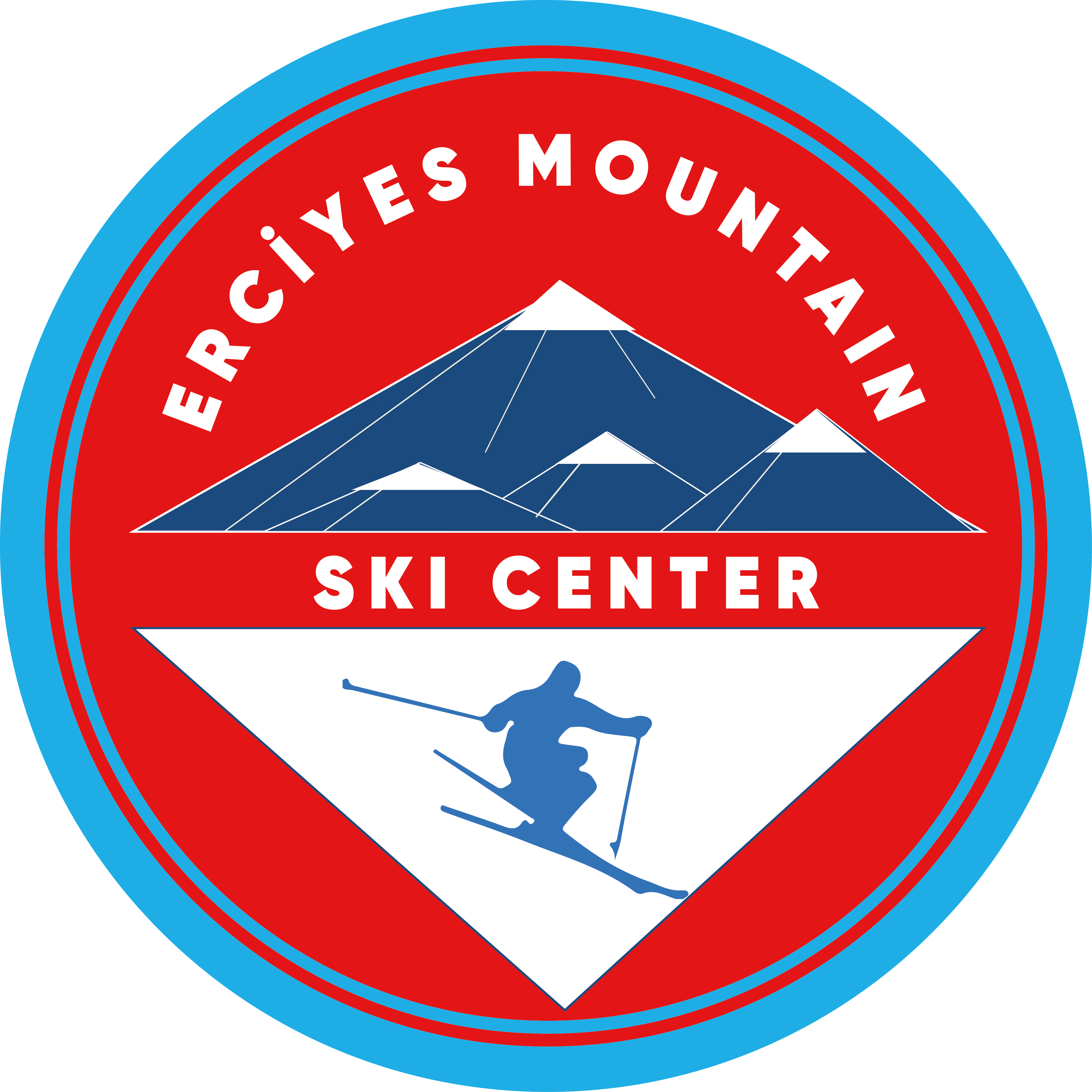SKI TYPES IN ACCORDING TO USAGE
You can find out important tips to choose your ski equipments in the relevant section.(04C link)
In this section, we would like to contribute to the motivation of those who are interested in Skiing and Snowboarding by providing them with more detailed information with technical background
As it is known,Skiing and Snowboarding are more than just a joyful glide down slopes;They are literally a competitive and require serious chalenge
Bu anlamda uygulama alanları ve uygulama tarzları farklılıklar gerektirdiği gibi her farklı uygulama için de işlevsel olarak farklı kayak takımlarına ihtiyaç duyulmaktadır.
In this sense,every skis are not the same and are different in according to terrain of usage and purpose of performance to be targeted
Please see in below table where these categorised differences are summarised for better understanding
|
SKI TYPES
|
PHYSICAL FEATURE
|
PERFORMANCE FEATURE
| PLACE AND USAGE |
| Down Hill | Heavy,hard and sharp edge,light weight,shorter lenght,wide waist |
High Speed,Good grip,good balance,good control
| High-inclined tracks and pistes for racing purposes |
| Telemark * |
Heavy,hard and sharp edge,light weight,shorter lenght,wide waist Only the heel parts are free
| High Speed, good grip,good balance and Dynamic skiing comfort | High-inclined tracks and pistes |
| Powder Skiing |
100 mm and more waist size with rocker nose
| Gliding easily rather than sink over the deep snow |
Deep powder snow conditions
|
| Free Style |
Flexable, light weight,shorter,round tail (Twin tip)strong grip on hard snow
| Allows backward skiing,and jumpingı |
Park ve Half pipe
|
| Free Ride |
With Stiff board not flexible as Free Style. Wide waist min 90-100 mm ,and rocker tips,
| High Speed, not sink ,balanced well
| off piste,deep snow and rough terrains |
| Ski Jumping |
Long ,thin,sharp edges and rocker tips
|
High Speed, friction resistant
|
Ramps and ski jumping
|
| Cross Country | Narrow waist ,Long and light weight | Special coted base to reduce friction |
Long ski walks on flat snowy grounds and flat snowy terrains with slightly sloping
|
|
All Mountain
| Waist size is normal,medium height,medium weight,fron end slightly raised and curved | Well balanced and Easy to control | Suitable to use almost for every level and every terrain and conditions
|
|
Carving
| Narrow waistline,wide tail and curved front tip | Well balanced ,allows easy turnings | Suitable especialy for those in beginner level in non-steep pistes |
CHOOSING SKI EQUIPMENT BASED ON SKILL LEVEL
| Level | Beginner Level | Intermediate Level | Advanced Level |
|---|---|---|---|
| Ability | Zero experience or very little experience | Those who have mastered basic skiing skills and aim to reach an advanced level | Has developed the ability to ski quickly. Focused on competition, contests, and adrenaline. |
| Slopes | Gently Sloped Slopes / Blue Slopes | Blue Slopes / Red Slopes / Off-Piste | All types of slopes including black, off-piste, inclined slopes, and freestyle parks. |
| Ski Type | Carving skis that have a high contact with snowy surfaces, are sensitive to low speeds, and provide ease in control and turns, or All Mountain skis that are comfortable to use in all conditions. | All Mountain skis that are comfortable to use in all conditions. | All Mountain skis that are comfortable to use in all conditions, speed skis like Race Carvers, freestyle skis like Twin Tips, and Slalom skis. |
SKI LENGTH SELECTION BASED ON ADULT HEIGHT
| Adult Height (cm) | Recommended Ski Length (cm) |
|---|---|
| 152 | 135-155 |
| 158 | 145-165 |
| 163 | 150-170 |
| 168 | 155-175 |
| 173 | 160-180 |
| 178 | 165-185 |
| 183 | 170-190 |
| 188 | 175-195 |
| 193 | 180-200 |
SKI LENGTH SELECTION BASED ON WEIGHT
| MALE Weight (kg) | Recommended Ski Length (cm) | FEMALE Weight (kg) | Recommended Ski Length (cm) |
|---|---|---|---|
| 60-70 | 160 | 45-55 | 145 |
| 70-80 | 167 | 55-65 | 152 |
| 80-90 | 174 | 60-70 | 160 |
| 90-100 | 181 | 70 üstü | 162 |
SKI LENGTH SELECTION BASED ON CHILDREN'S PHYSICAL CHARACTERISTICS
| Age | Height(cm) | Weight(kg) | Ski Length (cm) |
|---|---|---|---|
| 3 | 94 | 14 | 70-80 |
| 4 | 102 | 16 | 80-90 |
| 5 | 109 | 18 | 90-100 |
| 6 | 114 | 21 | 95-105 |
| 7 | 119 | 23 | 100-110 |
| 8 | 127 | 26 | 110-120 |
| 9 | 135 | 29 | 115-125 |
| 10 | 140 | 32 | 120-130 |
| 11 | 145 | 36 | 130-140 |
| 12 | 149 | 41 | 135-145 |
| 13 | 156 | 46 | 140-150 |
| 14 | 174 | 51 | 150-160 |
We found it appropriate to present the mentioned differences in the table below for better clarity.
